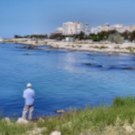Why Painting House Cost High?
-
Recently Browsing 0 members
- No registered users viewing this page.
-
Topics
-
-
Popular Contributors
-
-
Latest posts...
-
10
My Samsung A71 won't USB connect to my Windows 10 PC
My Android connects just fine. I had to load the drivers the first time but that was a long time ago. -
1
The Day weaponization of the DOJ/FBI crossed the Rubicon News.
Patriots are memorializing this anniversary as one of the greatest threats a Political party could ever perform on a citizen & former Potus at the time. It was on Aug. 8, 2022 that 30 FBI agents, armed and authorized to use deadly force, raided the home of then-former President Donald Trump — with the blessing of his successor, then-President Joe Biden. https://nypost.com/2025/08/07/opinion/mar-a-lawfare-three-years-later-war-on-trump-still-shocks/ -
3
Crime 7 Chinese Men Arrested for Working Illegally in Reserved Jobs
I think Hairdressing in total is not allowed for foreigners. Why? I have no idea. -
7
Do you now need a tax clearance cert when flying out of Thailand
Maybe it's run by Khun Heineken- 1
-

-
3
Crime 7 Chinese Men Arrested for Working Illegally in Reserved Jobs
Thai hair is 'different' only a Thai can understand its complexities. 😋 -
29
Cat At End of Life.
Chronic kidney disease (CKD) is a very common cause of death in cats, hardly surprising as their diet is mainly protein. CKD affects 80% of cats aged 15 or more. It's called the silent killer, and symptoms are increased weakness and lethargy. IMO best to let the cat die on its own terms.- 1
-

-
-
Popular in The Pub









Recommended Posts
Create an account or sign in to comment
You need to be a member in order to leave a comment
Create an account
Sign up for a new account in our community. It's easy!
Register a new accountSign in
Already have an account? Sign in here.
Sign In Now